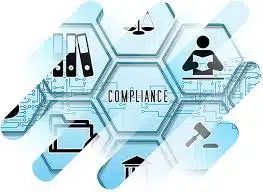- Introduction to Security Audits in Regulated Industries
- The Importance of Security Audits
- Understanding Regulatory Frameworks
- Evaluating Compliance for Linux Systems
- 1. Configuration Management
- 2. Access Control
- 3. Monitoring and Logging
- 4. Patch Management
- Implementing Effective Security Audits
- Conclusion
In today’s digital landscape, organizations operating within regulated industries face a multitude of compliance challenges. With increasing scrutiny from regulatory bodies, ensuring security and compliance for Linux systems has become a paramount concern. Security audits are essential for organizations aiming to safeguard sensitive data, align with legal requirements, and establish trust with clients and partners.
The Importance of Security Audits
Security audits serve as a comprehensive assessment of an organization’s security posture. They identify vulnerabilities, assess current security measures, and provide recommendations for improvement. For businesses in finance, healthcare, and sectors like energy, meeting stringent regulatory requirements is vital not just for legal compliance but also for maintaining a competitive edge.
Understanding Regulatory Frameworks
Organizations must navigate a complex landscape of regulations like HIPAA, PCI DSS, and GDPR. Each of these frameworks establishes specific requirements for data security and privacy. For instance, HIPAA mandates the protection of electronic Protected Health Information (ePHI), while PCI DSS focuses on the security of payment card data. Understanding these frameworks is critical for tailoring security audits to meet specific compliance needs.
Evaluating Compliance for Linux Systems
Linux is a popular operating system choice for businesses, especially in server environments. However, the flexibility and configurability of Linux also pose unique security challenges. A thorough security audit for Linux systems should cover the following areas:
1. Configuration Management
- Ensuring that Linux systems are configured according to best practices is essential. This includes user account management, file permissions, and setting up firewalls. Regular reviews and baseline comparisons can help maintain compliance with regulatory standards.
2. Access Control
- Implementing robust access control measures is critical. Auditors should review user permissions, groups, and roles to ensure that only authorized personnel have access to sensitive information. Multi-factor authentication (MFA) can also bolster security in compliance audits.
3. Monitoring and Logging
- Continuous monitoring and audit logging are necessary for identifying potential security incidents and demonstrating compliance with regulatory requirements. Implementing tools that can analyze logs in real-time will further enhance security postures.
4. Patch Management
- Regular updates and patches are crucial for securing Linux systems against vulnerabilities. A proactive patch management strategy that adheres to specific regulatory timelines can help organizations stay compliant and secure.
Implementing Effective Security Audits
To successfully implement security audits, organizations should establish a framework that embraces the following steps:
-
Assessment Planning: Outline the audit objectives, scope, and methodologies. This ensures that the process remains aligned with compliance requirements.
-
Data Collection: Gather relevant data, including system configurations, user access logs, and security policies. This data will form the backbone of the audit process.
-
Analysis and Reporting: Analyze the collected data against established regulatory benchmarks. Create a clear, actionable report that highlights vulnerabilities and offers remediation steps.
-
Follow-Up Actions: Once the audit is complete, organizations must prioritize remediation efforts. Establish a timeline for addressing identified weaknesses and conduct follow-up audits to ensure improvements are effective.
Conclusion
Security audits and compliance processes for Linux systems in regulated industries are not merely box-ticking exercises; they are vital components of a robust information security strategy. By regular auditing and aligning with regulatory requirements, organizations can mitigate risks, protect sensitive data, and gain stakeholder trust. As regulations evolve, so too must the strategies to ensure that compliance and security remain a top priority for organizations operating in this increasingly complex environment.
